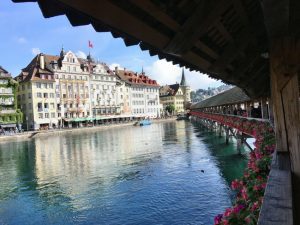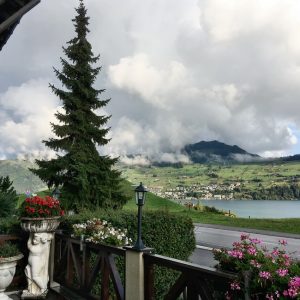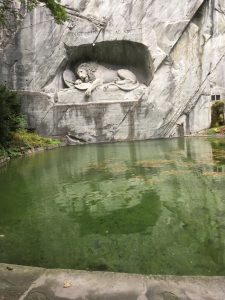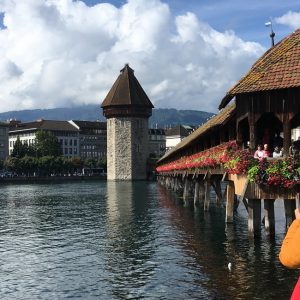Tag Archive
activity architecture art artist building Canada children city CostSaver downtown drive i-95 entertainment Europe event exhibit family festival Florida food fun historic History landmark local Museum music Nature New Zealand Ontario roadtrip sculpture Seattle show sights sightseeing tour tourist Trafalgar travel travelblogger view Washington Washington State water world
Switzerland, Lucerne: View from Kapellbrücke, Chapel Bridge
.
The riverside promenade on the Chapel Bridge in Lucerne has pretty views. You can see St.Peterskapelle (St. Peter’s Chapel) in the background.
Switzerland, Lucerne: We’re Really in Switzerland
.
Just minutes apart, the clouds roll in and change the scene significantly in Lucerne, Switzerland.
Switzerland, Lucerne: Lion Monument in Lucerne
.
Gletschergarten Lowendenkmal is massive heartrending stone relief which was carved to remember the Swiss Guards who were massacred in 1792 during the French Revolution when defending Louis XVI. Swiss Guards were and are famous as brave sentries. Today, they still surround the Pope. When the revolutionaries stormed the Tuileries Palace in Paris, more than 800 were killed during the fighting, after surrender, or died in prison of their wounds. 300 lucky survived because they were with the detachment which King Louis XVI had sent to Normandy to escort grain convoys. Two surviving Swiss officers went on to become senior ranked guards for Napoleon.
In 1880, Mark Twain had this to say about it ” His size is colossal, his attitude is noble. His head is bowed, the broken spear is sticking in his shoulder, his protecting paw rests upon the lilies of France. Vines hang down the cliff and wave in the wind, and a clear stream trickles from above and empties into a pond at the base, and in the smooth surface of the pond the lion is mirrored, among the water-lilies.
Around about are green trees and grass. The place is a sheltered, reposeful woodland nook, remote from noise and stir and confusion and all this is fitting, for lions do die in such places, and not on granite pedestals in public squares fenced with fancy iron railings. The Lion of Lucerne would be impressive anywhere, but nowhere so impressive as where he is.”
Switzerland, Lucerne: Cute Swiss Army Guy
.
The Swiss Army marketers sure know how to make you smile, stop, take a photo, and yes, perhaps walk in and buy something. Okay we bought a Swiss Army Knife. One of my favorite gifts has been the Swiss Army card; It’s the size of a credit card, fits in your wallet and has the necessary gadgets hidden in it.
Switzerland, Lucerne: Covered Walk in Lucerne
.
There’s a pretty riverside promenade in Lucerne. Chapel Bridge is one of the oldest wooden bridges in Switzerland as it was mentioned in writing around 1367. As you walk it, look up underneath the roof and you will be surprised to see paintings there. A prominent Water Tower here had been used as a dungeon, an archive, and a treasury vault. These were parts of the oldest medieval city ramparts of Lucerne. You can also take a peek into St. Peter’s Chapel.
Switzerland, Lucerne: Switzerland = Watches
.
A stop in Lucerne gave us endless hours of browsing through watch shops. The incredible amount of creativity of what can be designed on a watch was amazing.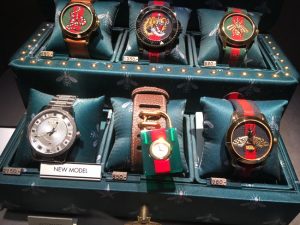
Cosmos Tour: Prague Vienna Budapest – Beloved Sisi, Empress Elisabeth
Just as we have our beloved famous Disney princesses, the Austro-Hungarian Empire had theirs – but she was for real. They call her by her nickname Sisi, and she was their Empress for 44 years.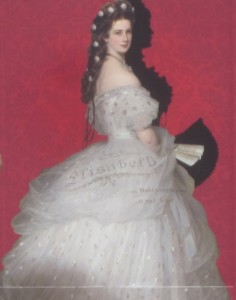
Their have been numerous movies, plays, operas, ballets, books and music about her in the German speaking world. It is probably the trilogy of romantic films about her life which starred a young Romy Schneider which made her a household name. She is so popular that the 3 movies are shown every Christmas on Austrian, German, Dutch, and French television.
Though her husband Emperor Franz Josef adored her, she felt stifled by Habsburg court life and traveled extensively whenever and wherever she could. She loved learning and spoke English, French, modern Greek and Hungarian. Her domineering mother-in-law made her life miserable and even took away her children to raise. Her first daughter died as a toddler and her beloved son Crown Prince Rudolph, heir to the throne, committed suicide along with his lover, and she never fully recovered from that loss.
Empress Elisabeth was vain and did not sit for any portraits after she was 32 and would not allow any more photographs, so that her public image would always remain of her youthful self. She was tall, and compulsively maintained the same low weight all through her life thru exercise (horsemanship, fencing, hiking) and fasting.
Her interest in politics had developed as she matured. She felt an intense emotional alliance with Hungary, and worked toward it gaining an equal footing with Austria. Elisabeth was an ideal mediator between the Magyars and the Emperor. She was a personal advocate for Hungarian Count Gyula Andrássy (he was a lifelong friend, and possibly her lover).
Finally, the Austro-Hungarian Compromise of 1867 created the double monarchy of Austro–Hungary. Andrássy was made the first Hungarian prime minister, and in return he saw that Franz Josef and Elisabeth were officially crowned King and Queen of Hungary.
Sisi was assassinated “by accident” in 1898 by Luigi Lucheni, who had planned to kill the Duke of Orleans, Pretender to France’s throne, but the Duke had left town. Despite warnings of possible assassination attempts Elisabeth, now age 60, traveled incognito to Geneva. She eschewed the protection which the Swiss government had offered and only promenaded with her lady-in-waiting.
You can visit many of her residences: her apartments in the Hofburg and the Schönbrunn Palaces in Vienna, the imperial villa in Ischl, the Achilleion in Corfu, and her summer residence in Gödöllő, Hungary.
These plaques, mounted in Vienna, tell some of her story:
Switzerland: Herdsman Wrestling, Stone Throwing and Alphorn Blowing Festival
 |
Federal Wrestling and Alpine Festival
Schwingen – the Swiss form of wrestling – is very popular in Switzerland. In fact, it developed from herdsman’s pastime to elite sport. Schwingen is fought as a duel between two physically powerful competitors and has its own rules, grips and throws.
The champion wrestler is chosen at the Federal Wrestling and Alpine Festival held every 3 years. Over 250,000 visitors are expected this year in the Emmental arena. The spectacle will be accompanied by other Swiss traditions like yodeling and alphorn blowing.
Around 50,000 individuals will follow the events of the traditional Swiss sports of Schwingen (Swiss wrestling), Hornussen (a traditional team sport, which involves throwing and catching a type of puck called Hornuss) and Steinstossen (stone throw).
Location: Bern
Dates: Aug 30 -Sept 1
www.bern.com/en/region/emmental/events/schwingfest-2013

